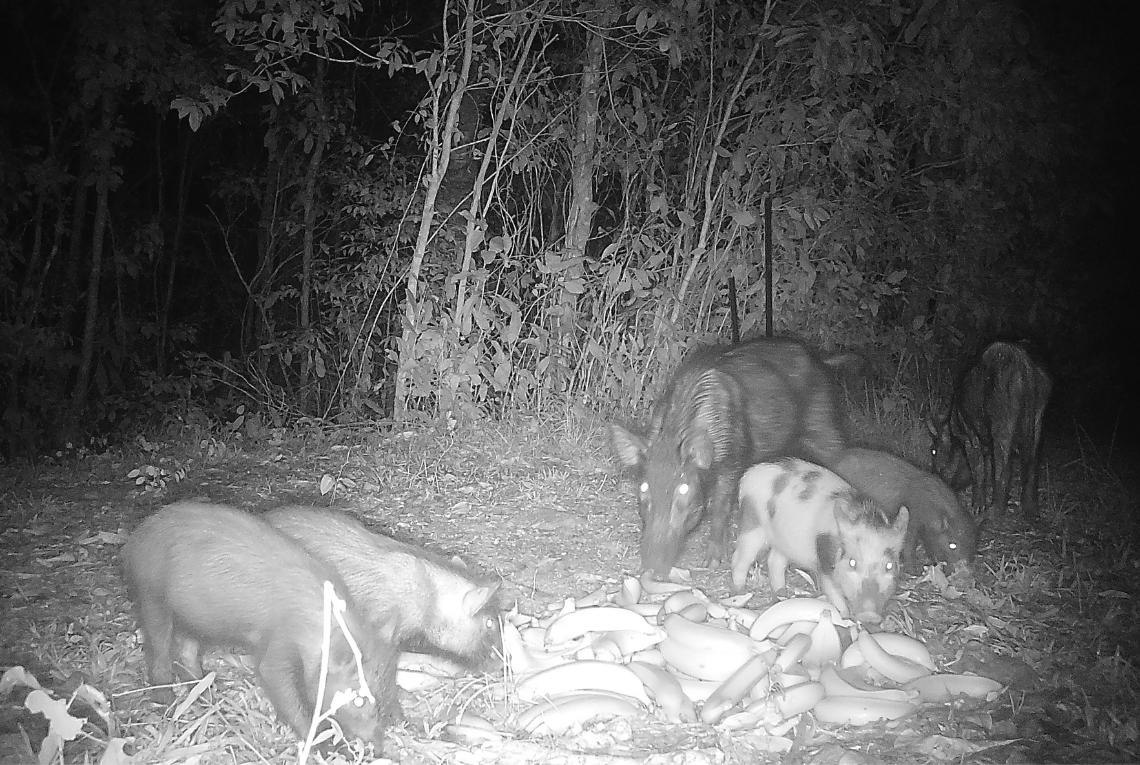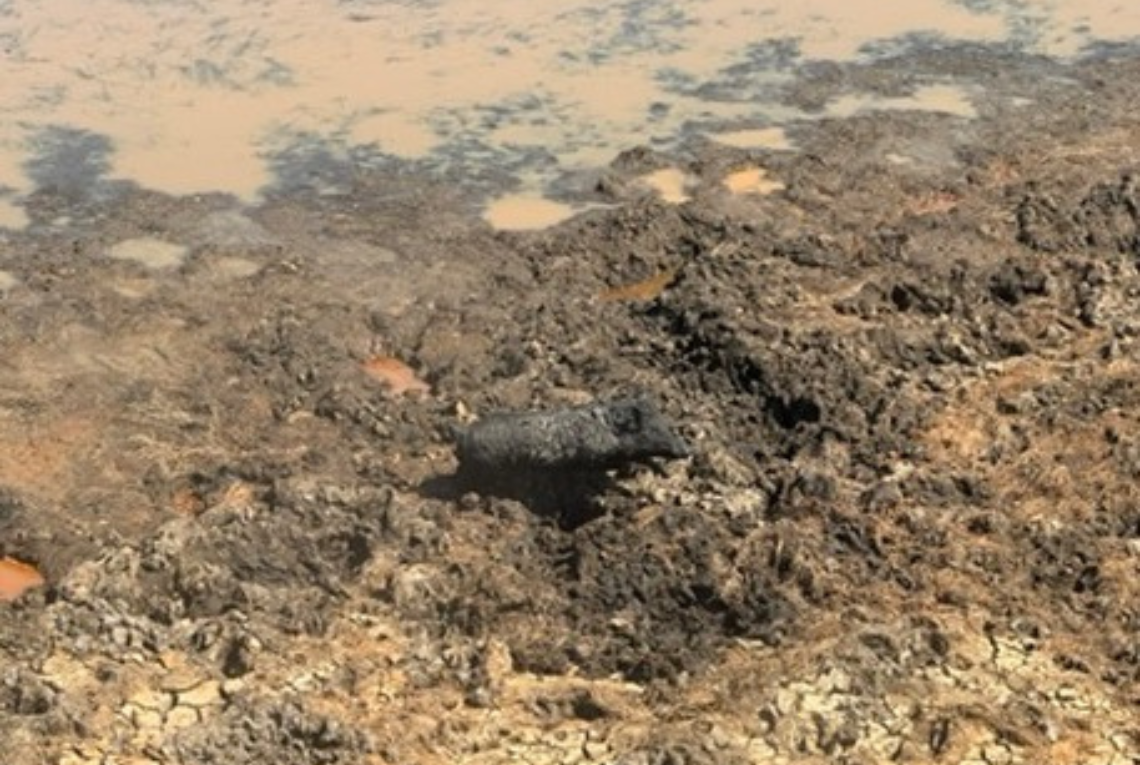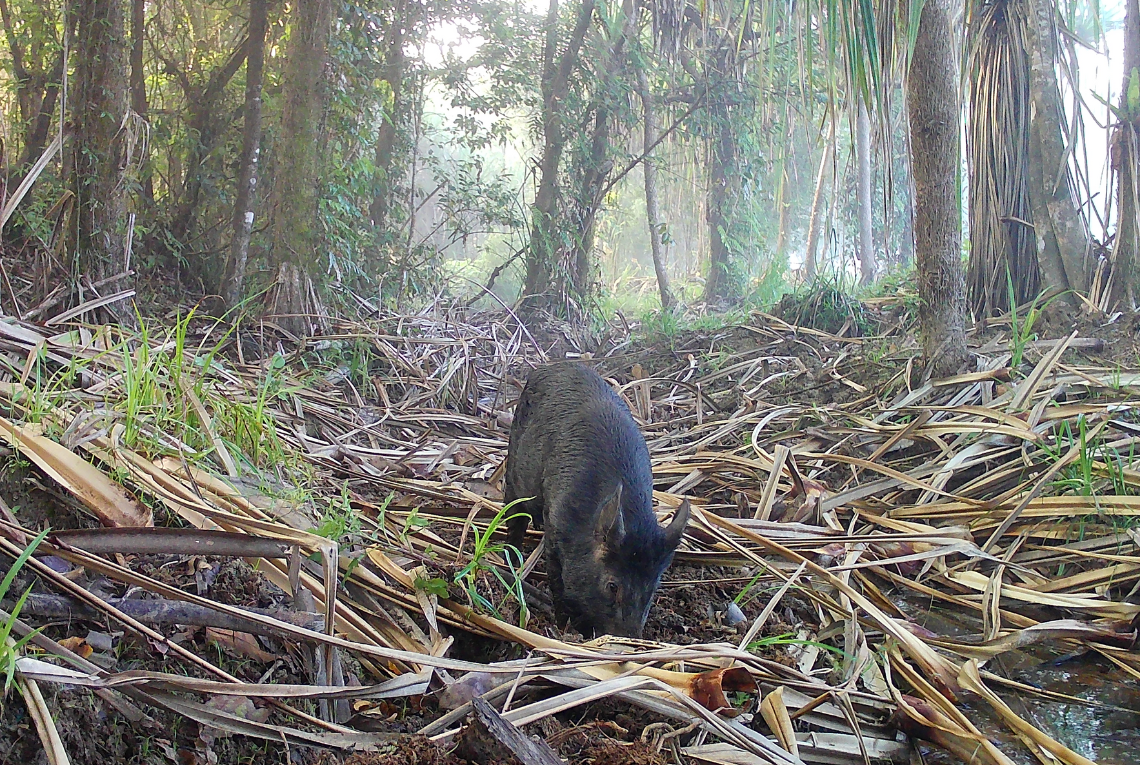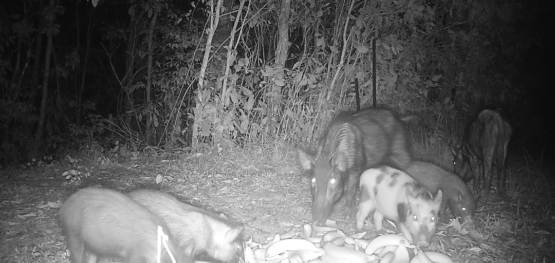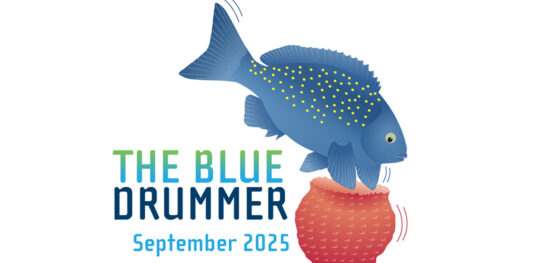Article
5 September 2025
A major project to develop an effective management strategy for feral pigs is well under way in northern Australia. In August, the project leader spent two weeks in Kakadu National Park, working with rangers to deploy more than 60 cameras, set bait stations, and carry out aerial surveys.
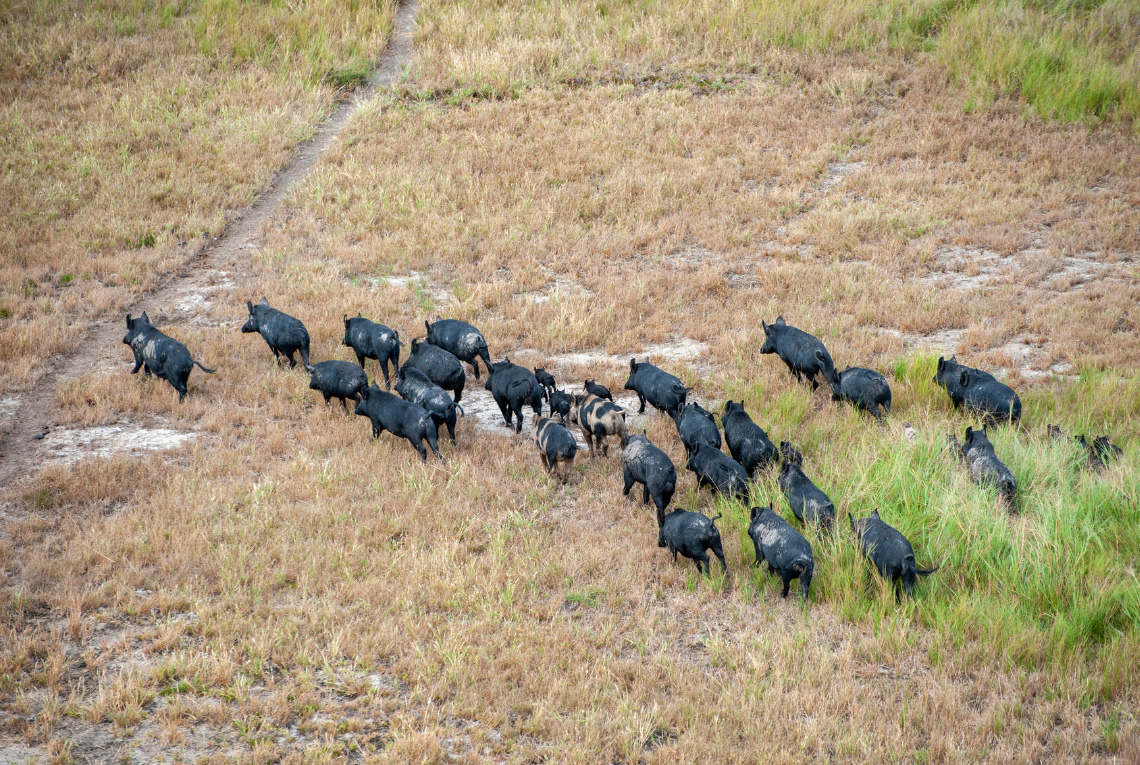
The Marine and Coastal Hub project is led by the North Australian Indigenous Land and Sea Management Alliance Ltd (NAILSMA). It was co-designed with Daluk Rangers, Juunjuwarra Rangers and Madjaybana Rangers who are also collaborating in the field research. Fieldwork is being conducted at three sites in northern Australia to capture different environments: Kakadu National Park, Cape York, and the Russell–Mulgrave catchment.
“This project is about finding practical and lasting solutions that reduce the damage pigs cause to Country, communities, and wildlife.”
Dr Andrew Hoskins, Project Leader – NAILSMA
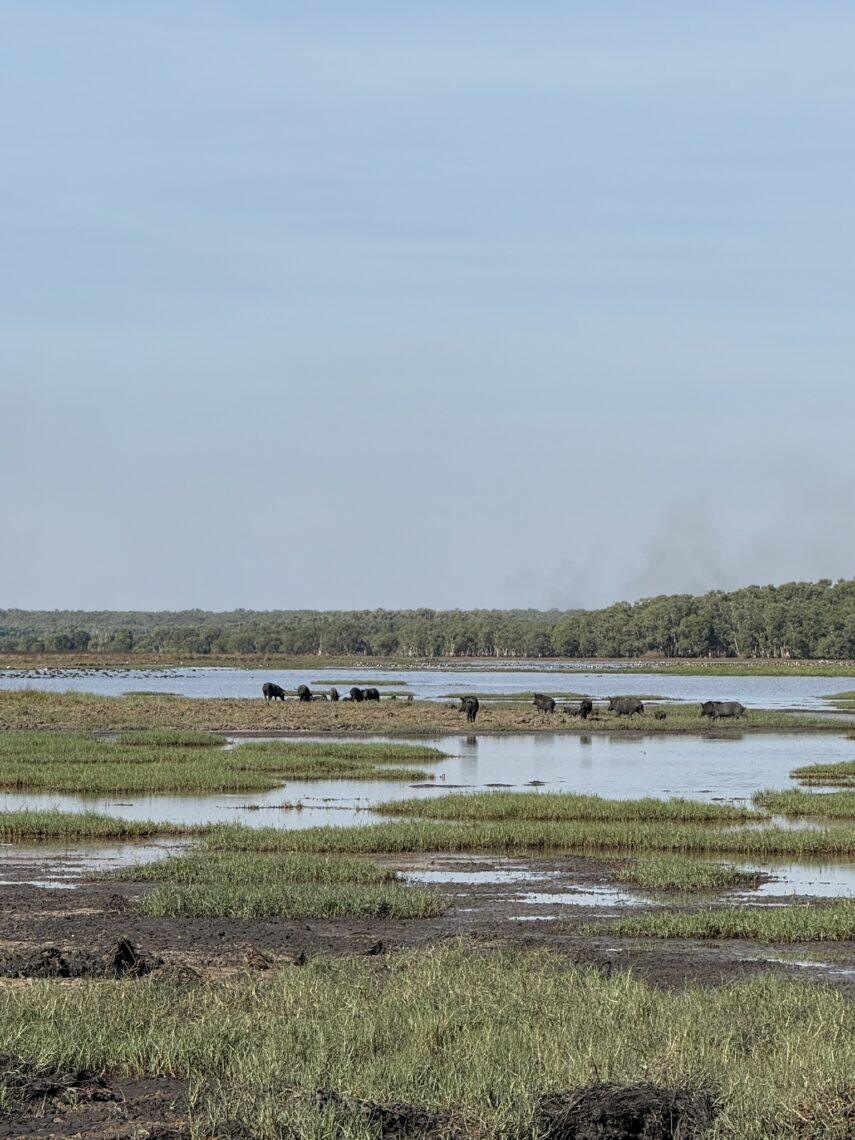
Feral pigs remain unchecked across northern Australia, where their numbers are highest. To date, there is no effective landscape-scale approach to managing feral pigs on the mainland of Australia. Past control efforts have mostly been localised and small-scale, with little effect on overall numbers. Scientists estimate that at least 70% of the pig population must be removed each year to achieve meaningful reductions. This level of control has never been reached, highlighting the urgent need for new, science-based strategies.
The project is addressing this challenge by developing and trialling an integrated pest management (IPM) approach for feral pigs. IPM combines a range of complementary monitoring and control methods, designed and applied together to maximise effectiveness within the available resources. This approach has proven successful for other pest species. For example, the Tropical Water Quality Hub (a forerunner of the Marine and Coastal Hub) developed an IPM approach for managing Crown-of-Thorn Starfish on the Great Barrier Reef. It is now being adapted to address the complex pressures posed by feral pigs, but success depends on gathering detailed data.
The project components include studies of pig ecology and behaviour, quantifying impacts on biodiversity and cultural values, and testing control and surveillance methods. The monitoring methods include tracking feral pigs to elucidate the movement of sounders (family groups of feral pigs) in the landscape, aerial surveys, and camera trapping. The outcomes will provide evidence for scaling up effective control across different land tenures and jurisdictions.
Another key feature of the project is collaboration. Indigenous land and sea management organisations are central partners in testing IPM at the three case study sites. Local knowledge, cultural priorities, and on-ground expertise are integrated with ecological research and monitoring.
“By combining science and Indigenous knowledge, we can design management strategies that work effectively within local contexts,” Dr Hoskins said.
Expected benefits of the project include improved coastal protection and restoration, stronger Indigenous capacity in monitoring and land management, and better data to inform national priorities such as the Feral Pig Action Plan.

